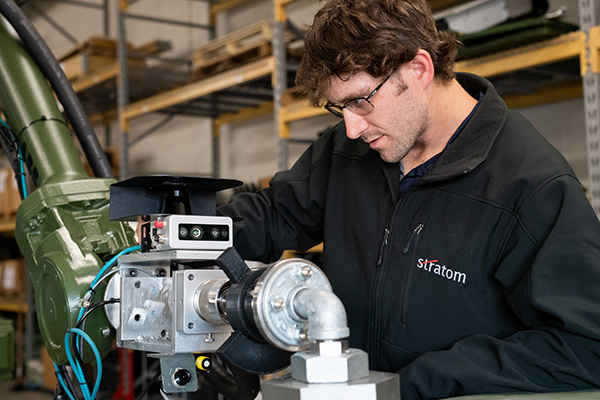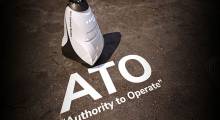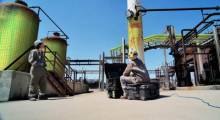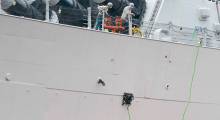Last week, Stratom announced that the U.S. Army had awarded it a contract to develop an autonomous ground vehicle refueling (AGVR) prototype to integrate into a Palletized Load System (PLS) flat rack for autonomous convoy operations. The automation of logistics functions can help improve security, optimize efficiency, and save costs, said the Boulder, Colo.-based company.
“Convoys are the No. 1 target overseas, which is why the Army is exploring autonomous vehicles as a way to reduce the number of soldiers needed to run these operations,” stated Mark Gordon, president and CEO of Stratom. “By empowering humans to stay focused on high-level, mission-oriented, decision-making tasks— not the supporting functions of those tasks— our solution significantly increases project flexibility and cost efficiency while also solving productivity and safety challenges.”
Stratom develops unmanned ground vehicles; autonomous mobile robots; and systems for cargo movement, hazardous liquid transfer, and refueling. It has been working with the U.S. Army Ground Combat Capabilities Development Command Ground Vehicle Systems Center (DEVCOM GVSC). For years, the GVSC has been looking to integrate automating resupply vehicles and the fleet-refueling process.
The company is using vision sensing and detection systems to enable its AGVR to autonomously locate the fuel port on a target vehicle, extend a tool head, and retract the arm once the process has been completed. The system, which includes a fuel tank, generator, sensors, and computer equipment, will be integrated into a Warfighter Machine Interface. It will be able to refuel a PLS from the ground or from the flat rack of another PLS, said Stratom.

Gordon has decades of experience working with the federal government, the U.S. military, and on robotics research and development. He is also chairman of the board for the Association of Unmanned Systems Vehicles International (AUVSI) and is on the board for the National Advanced Mobility Consortium (NAMC). Gordon responded to the following questions from Robotics 24/7 about the contract:
Since the AGVR contract is from now through this fall, what are the biggest challenges in preparing the demonstration?
Gordon: There are two primary challenges in developing this particular AGVR system.
First is the short timeline of the project. Fortunately, it is possible for us to deliver what is needed within a tight timeframe due to Stratom’s experience in delivering AGVR systems. With a focus on robotic refueling, our team is able to quickly determine what the best solution is to meet the numerous requirements within the timeframe provided.
The second challenge is ensuring the system will work in various environmental conditions. Developing robotic systems that will be used in very controlled environments—such as a manufacturing floor or warehouse—is much less complicated than what we are delivering. Being able to control every aspect of the situation—from lighting to the temperature of the room—is a luxury. Our customers do not have this kind of luxury out in the field.
Our systems must be ready for any situation including vibration and various environmental conditions, such as dust, dirt, sand, rain and snow. Stratom prides itself on being the go-to expert in solving these kinds of difficult logistics and operational challenges.
How much does the AGVR build on Stratom's previous Autonomous Ground Resupply (AGR) work, and how much is new?
Gordon: This project builds upon other programs that we have worked on over the years. Our past experience makes it possible to efficiently and effectively execute to the requirements needed.
In fact, we were the first company to deliver robotic ground refueling solutions for aircraft and ground vehicles within the DoD [U.S. Department of Defense]. This background proves our reliability and capability to do this type of project.
Are there any implications for civilian uses of autonomous ground vehicles?
Gordon: Yes, there are definitely applications for civilian usage. We hope to take this technology from what we are doing with DoD and leverage it in the commercial world—specifically, in the areas associated with fleet vehicles, hazardous liquid transmission, as well as any autonomous ground vehicles and manned vehicles that need to be refueled. This might include applications in environmentally challenging and remote locations, such as mining and construction, that would benefit from an AGVR system.
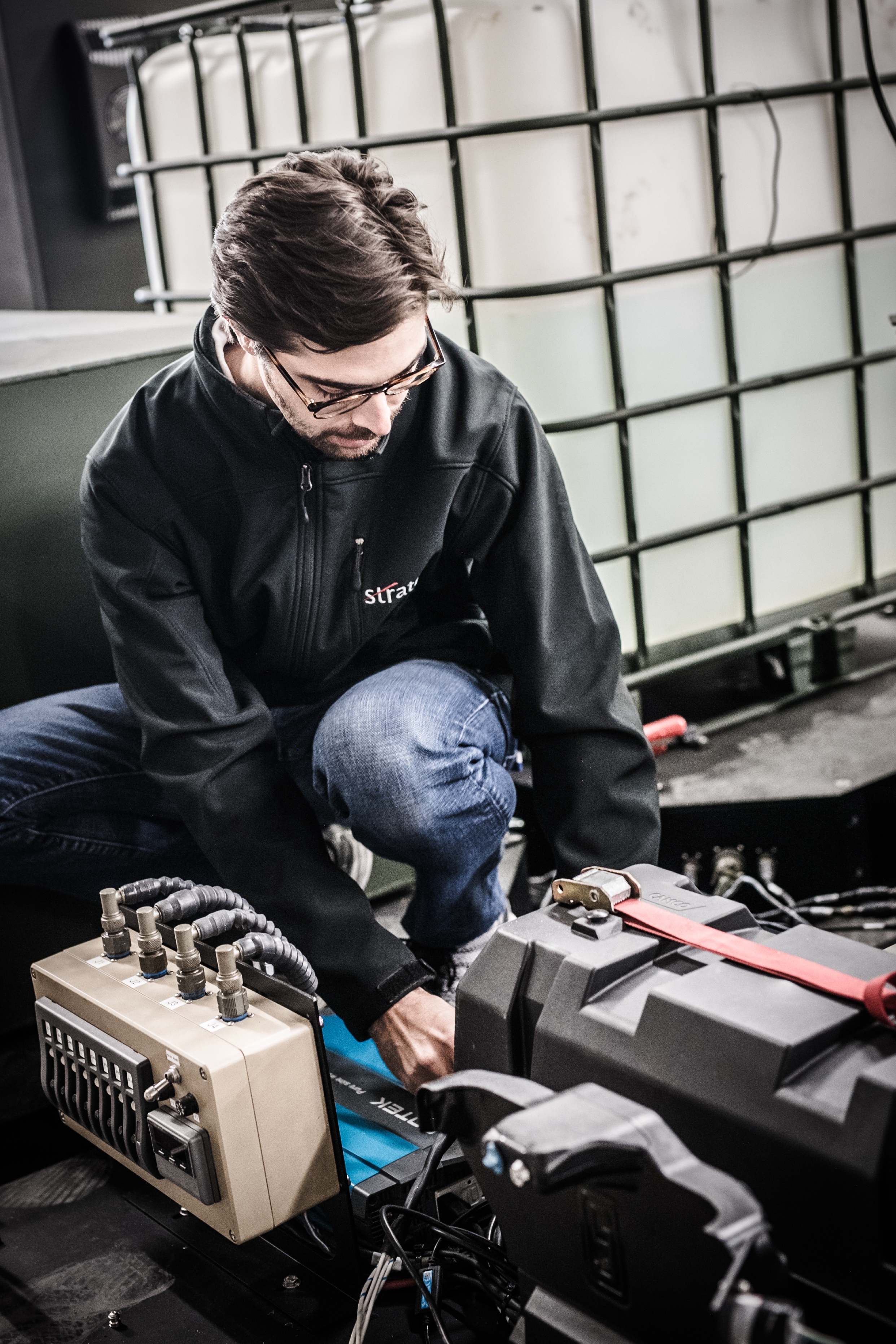
Does the AGVR use commercially developed components?
Gordon: Yes, the AGVR integrates commercially available technology with Stratom’s specialized IP [intellectual property] to develop systems to specifically meet the military requirements. All of this can be translated over to the commercial world. We will be able to take the work we are doing here and use same IP for commercial applications.
Is there a remote-control option?
Gordon: While this is technically possible, should there ever be a need, remote control is not intended to be a function of this system. Generally speaking, refueling systems do not have a real-world need for a remote-control option.
Currently in our AGVR system, the operator would initiate a single or multiple system refueling process. At that point, the system takes over, and it refuels by itself.
For a person to remote-control the nozzle head down to refuel a vehicle would defeat the purpose of the AGVR system. If this hands-on approach is needed, you might as well just fuel the vehicles manually.
However, the unmanned ground vehicle the system is residing on would most likely have the ability to use a remote control if required. For example, a heavy cargo unmanned vehicle could get stuck somewhere. In this situation, you will want to use remote control to get through the challenging obstacle and then turn it back over to its autonomous mode.
If the demonstration is successful, what's the next step?
Gordon: Stratom will be demonstrating the full capability of its AGVR prototype system for Army leadership later this fall. The demonstration will then set the stage for future military applications. What is next is limited deployment, as well as integrating this refueling capability to different types of vehicles.
The intent is for Stratom’s AGVR system is to eventually be capable of autonomously refueling almost any fleet or combat vehicle.
About the Author
Follow Robotics 24/7 on Linkedin
Article topics
Email Sign Up

